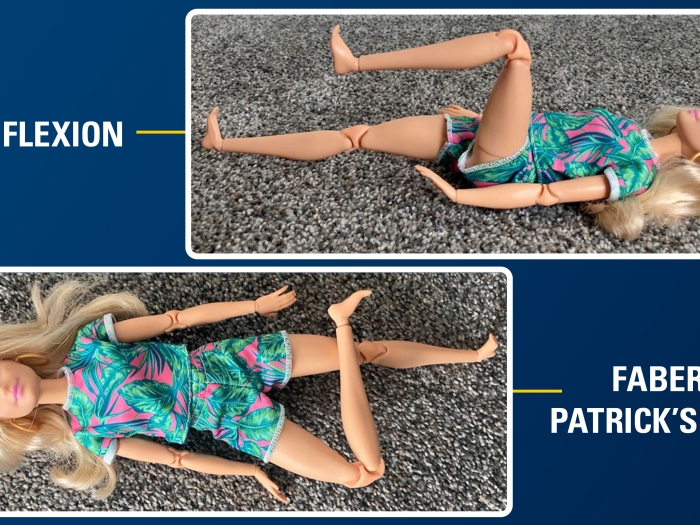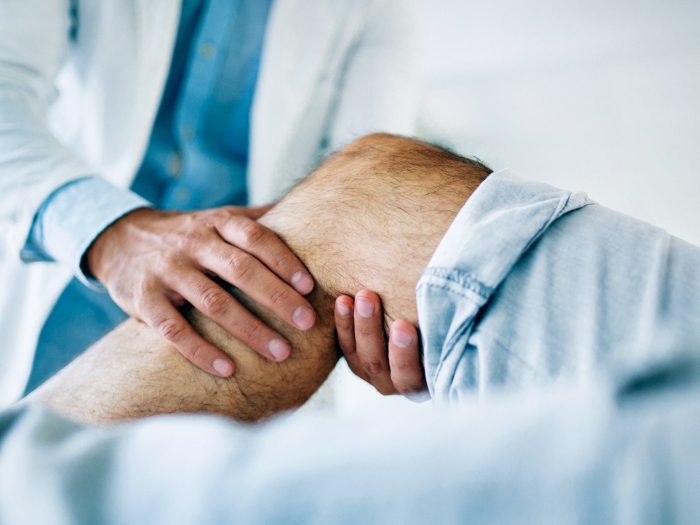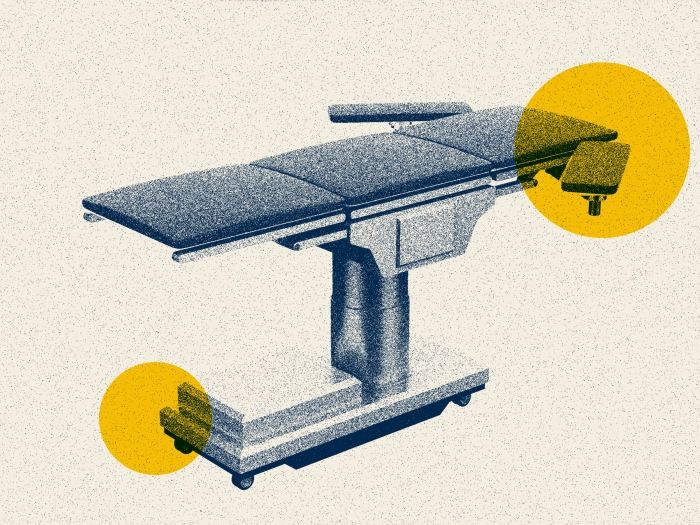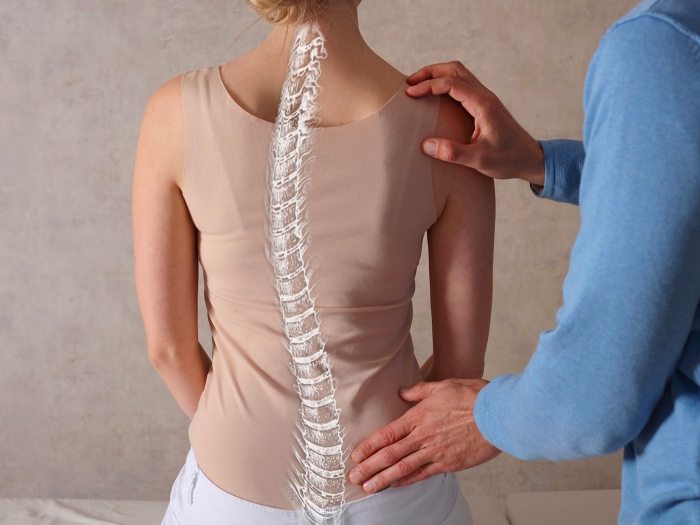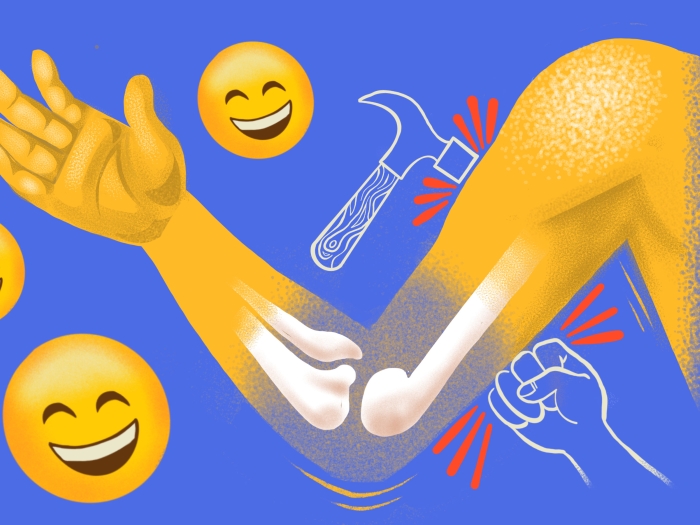After a moped accident left one teenager with severe leg injuries, amputation surgery and physical therapy with her prosthetic leg are now helping her accomplish her goals, including walking again in high heels.
5:00 AM
Author |

In June 2016, Kearstin Miracle was out for a drive on her moped down a two-lane road in Grand Haven, Michigan.
"It was a 40 miles per hour road and the car a few cars in front of me stopped suddenly to avoid hitting a flock of turkeys that were crossing," Miracle says. "After that, it was a chain reaction."
Miracle, who was 15-years-old at the time, was hit from behind, causing her left leg to break in 19 places and leaving her right leg with two large lacerations and both anterior cruciate ligament and medial collateral ligament tears.
Over the next few months and years, Miracle underwent several surgeries and procedures to save mobility in both of her legs, which included inserting plates and screws, skin graft procedures and trying to reconstruct her left leg.
"Her femur in her left leg was looking relatively healed, but by this point — a couple of years after the accident — she had gone through 13 failed surgeries on her left leg trying to reconstruct it and regain its mobility," says Crystal Miracle, Kearstin's mother. "She was sick of surgery and hit a wall. That's when we knew the University of Michigan was where we needed to go."
The Miracles met with Brian Kelly, D.O., a professor of physical medicine and rehabilitation at Michigan Medicine, and David Brown, M.D., a professor of plastic surgery at Michigan Medicine.
"This wasn't the first time amputation had come up as an option," says Lee Miracle, Kearstin's father. "It was discussed by her other doctors right after the accident took place, but each time she kept trying to fight to save her leg. It was then, after so many failed attempts, that Kearstin wanted to fully consider the option."
Miracle adds, "Dr. Kelly wanted to make sure I was comfortable with whatever I decided. But he did remind me that amputation is a one and done thing. You can't reverse it."
But Miracle, who is an active young woman, felt it was time to move forward.
LISTEN UP: Add the new Michigan Medicine News Break to your Alexa-enabled device, or subscribe to our daily updates on iTunes, Google Play and Stitcher.
"I was ready to be active again and get on with my life," she says. "Amputation seemed like the best option for me long term because of all the options, it was the only one suggested that would get me back to running and physical activity. One suggestion was that I would have to wear a brace my whole life and that just seemed so hindering."
She adds, "I was told over and over that I would not run again, regardless of the surgeries that were suggested, and being able to run again was a huge determining factor for me."
In late March 2019, Miracle underwent amputation surgery with Brown.
"With all of the other surgeries, there had been tears of 'I thought this would fix it, or I thought this would help,' but with the amputation surgery, there were no tears or crying," Crystal says. "Not even once. Even waking up post-operation, she was totally ready and accepting of her new journey."

Physical therapy
Two weeks after the surgery, Miracle started physical therapy sessions three times a week at the Michigan Medicine Comprehensive Musculoskeletal Center at its Brighton Center for Specialty Care location.
"I hadn't used my left leg in so long so we really had to start building up muscle again in my upper thigh before I could get a prosthetic leg," Miracle says.
Her physical therapists, Shawn Hoffman, P.T., DPT, and Danielle Bordo, P.T., DPT, went to work on helping her strengthen her muscles in preparation for the prosthesis.
"I noticed after just a few weeks that my swelling went down and I had no issues with my hip flexor," Miracle says.
But the amputation didn't come without some challenges.
"I experienced phantom pain and every few hours it would feel like my foot fell asleep and then was being stabbed, but I didn't have a foot there," Miracle says, adding that now her phantom pains are nearly gone, and she no longer needs pain medication, thanks to the procedure performed by Brown during the amputation surgery.
After a few months, she was fitted for a prosthetic leg and then started working with Bordo on exercises moving her left leg again.

"We really focused on strengthening because I'm pretty strong, but I still had weakness in my hip," Miracle says. "We would do full body workouts to get me used to using the left side of my body again, including my abs."
And Bordo is helping her get back to her ultimate goal of having an active lifestyle again.
"My biggest goal is I want to run and ski again," says Miracle, now 18-years-old. "But there's also little things, like when I'm older I want to be able to run and play with my kids. I feel like I wouldn't be able to do that if I kept my leg."
Crystal agrees, "We're not saying amputation fixes everything, because there are still very tough days, but it did make it so she wasn't disabled and gave her the ability to get her life back, which was a very big deal."
A supportive team
Throughout her journey, Miracle has been surrounded by a supportive team both personally and medically.
"My daughter-in-law made bracelets that say 'nevertheless she persisted, team KK' which is our nickname for Kearstin," Crystal says. "That was super encouraging because we got flooded with photos of people literally from around the world wearing the bracelets."
MORE FROM MICHIGAN: Sign up for our weekly newsletter
In terms of Miracle's care, Crystal felt it was more than just a focus on the exercises.
"From a mom standpoint, physical therapy was important to help her gain strength, but it also was a huge mental gain to get out of the house and get her moving again," Crystal says. "The prosthetics world was a whole new world for us with a learning curve, and new language, and her therapists talking us through that before and after amputation was phenomenal."
In addition, Crystal and Lee were impressed with the supportive attitudes of Miracle's physical therapists.
"Shawn and Danielle were so supportive in helping with her recovery," Crystal says. "Danielle really showcases the power of teamwork and even invited Kearstin's prosthetist to one of her recent sessions so they could help Kearstin together from both sides of care."
Miracle adds, "I'm BFFs with Shawn and Danielle."

And the feeling is mutual.
"She is such a hard worker during therapy and always committed to trying new things," Bordo says. "She is truly a brave young woman for making such a difficult medical decision to pursue elective amputation and has always remained confident throughout the entire process."
Tattoos and high heels
Miracle commemorates the accident by getting a special tattoo each year.
"For the first anniversary I got a tattoo on my arm that says 'Even so it is well,'" Miracle says.
For the second anniversary, she wanted to get a tattoo that celebrated the injury to her right leg.
"My family and I call the scars on my right leg my shark bite because they look like a shark bit me so I got a shark fin on my ankle," Miracle says. She's currently deciding on her third tattoo.
Miracle keeps attending physical therapy sessions and working towards accomplishing her goals. This summer she started stand up paddle boarding and keeps working on her core and overall strength.

One goal she can check off the list? Walking in high heels.
"Both of my brothers got married this summer and one of my goals was to walk down the aisle in high heels," Miracle says.
Crystal adds, "Right before the amputation was done, we bought these gold high heels and called them 'inspiration heels.' Her goal was to get in them and walk down the aisle unassisted."

For the first wedding, this past May, Miracle didn't have her prosthetic leg yet, but as her mother notes: "She wore the heel with confidence."
For the second wedding, this past August, Miracle chose to walk down the aisle unassisted in flats.
"Though she chose not to wear them for the actual ceremony, she rocked them multiple times that weekend, and many times since," Crystal says.
Miracle adds, "I actually feel more sure of my step when I wear heels."

Explore a variety of healthcare news & stories by visiting the Health Lab home page for more articles.

Department of Communication at Michigan Medicine
Want top health & research news weekly? Sign up for Health Lab’s newsletters today!
